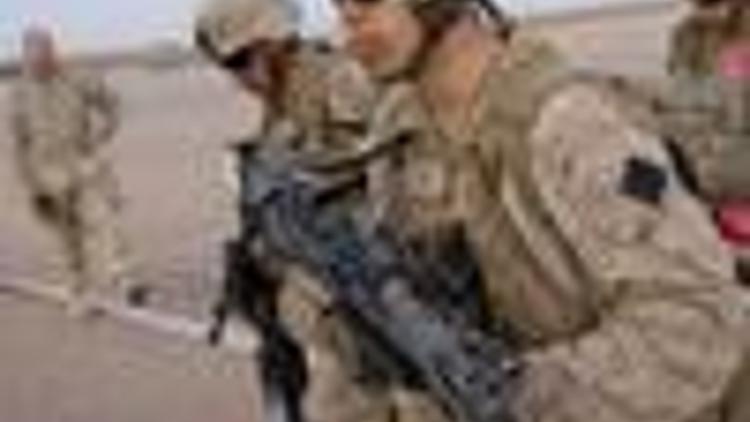Thousands of US Marines storm south in major Afghan offensive
Güncelleme Tarihi:

CAMP DWYER - Thousands of U.S. Marines poured into Afghanistan’s Taliban heartlands Thursday in an air and ground assault that marked a high-risk test for President Barack Obama’s new war plan.
Dozens of aircraft ferried out U.S. forces from bases before dawn, aiming to take control of insurgent bastions of Helmand province in the country’s south ahead of landmark Afghan elections next month.
Involving nearly 4,000
"What makes Operation Khanjar different from those that have occurred before is the massive size of the force introduced, the speed at which it will insert," Marine commander Brigadier General Larry Nicholson said.
Several hours into the Marines biggest battle since Fallujah in
"Our aim is for us to be meeting local people within hours, and that’s what well be doing for the next seven or eight months," Nicholson told AFP.
The operation called Khanjar, which means dagger in Dari and Pashtu but translated by the Marines as "Strike of the Sword", also involved about 650 Afghan police and soldiers. �
A fleet of helicopters lifted about 300 soldiers from a desert camp called Dwyer at dawn with their commander confident they would have cleared a key road, secured a bridge and met with villagers by evening.
"I told my men everything they have done to prepare for this operation means they are ready to go," said Captain Junwei Sun, 39, commanding officer of 2/8 Infantry Battalions Fox company.
Afghan security forces were driving out to their targeted area, where the forces would meet, he said. "We expect to encounter resistance and come into enemy contact," the captain added.
The first highly aggressive phase of the operation was set to last 36 hours, commanders said.
The troops were to push south down the
Commanders said they would persuade locals that the Afghan security forces -- backed by Western troops -- offered them a better long-term future than the Islamist hardliners.
"This is a big, risky plan," Nicholson told his men at a briefing at
"It involves great risks and amazing opportunities. These are days of immense change for
Reflecting the new
"One of the most critical things is to tell people why were there, and we are going to have a limited opportunity to gain their trust," Nicholson said.
"Our actions will allow voter registration in areas where there has been none," he told commanders and embedded reporters.
Key targets of the air and land assault include the districts of Nawa and nearby Garmsir, where many insurgents are said to take refuge and produce the opium that funds militants.
Officers walking through the battle plan on a large floor map said they expected to find 300-500 Taliban fighters in Nawa district.
They also spoke of the key role that would be played by teams clearing roads of improvised explosive devices -- favored weapons of the militants. �
Unmanned aerial surveillance would keep watch overhead while loudspeakers would keep local people informed, they said.
Afghan army corps commander General Shair Mohammad Zazai said the operation, conducted on three main fronts, would establish security "so that people can go and vote with confidence and without fear".
Authorities have been concerned that the Taliban could undermine
"The goal of this operation is to retake control of areas which are not in government control and will continue until the goal is achieved," the Afghan defense ministry added.
Khanjar appeared to be the biggest joint operation in

